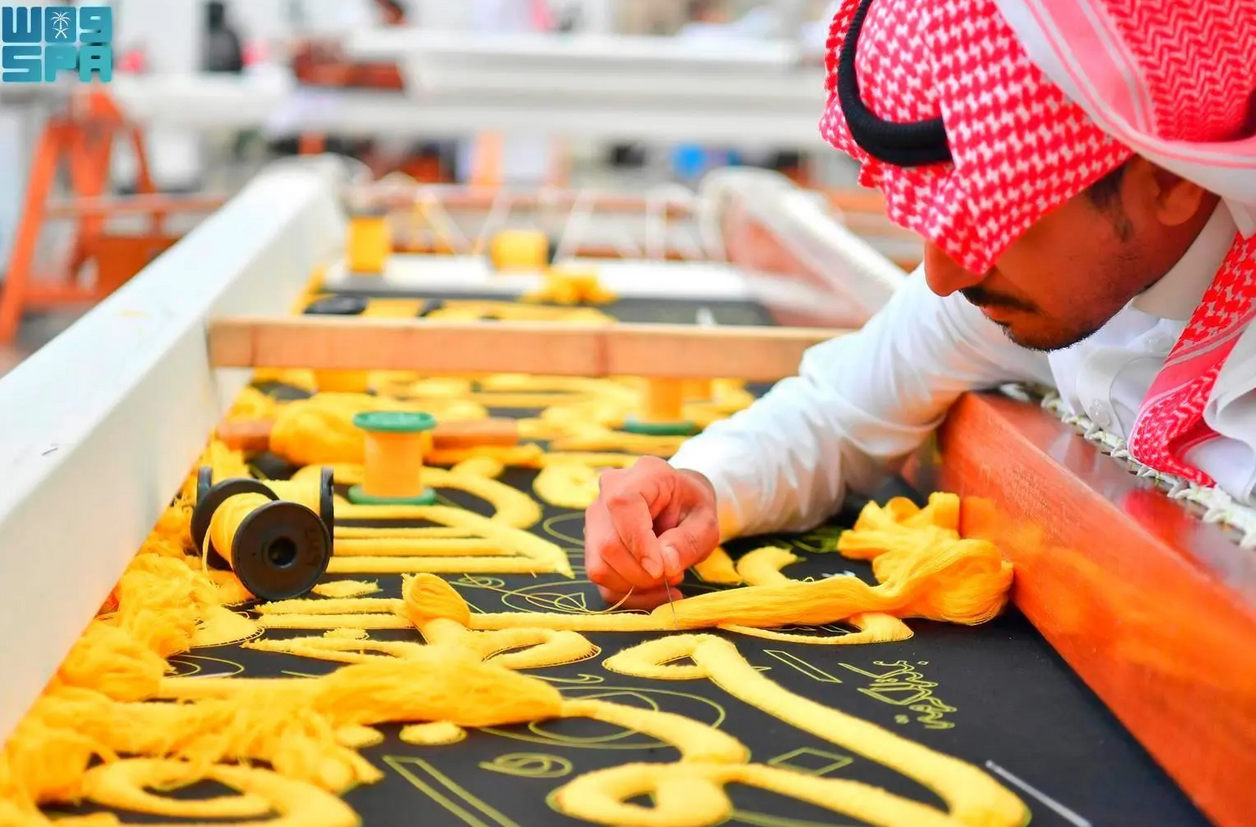
With Skilled Saudi Hands: The Holy Kaaba's Kiswa Crafted from Silk, Gold, and Silver Threads
With exceptional skills and deft hands, a group of youth masterfully weaves the cover "Kiswa" of the holy Kaaba using threads of silk, silver, and gold. They work through several stages to craft the Kiswa of the holy Kaaba.
The manufacturing process of the Kiswa begins with the "sweetening" of water according to specific standards for silk washing and dyeing. Next is the "dyeing" stage, where the protective wax layer is removed and the silk is dyed black for the outer covering and green for the inner covering and the Prophet’s Chamber. The silk is then dried in specialized dryers.
During the "laboratory" stage, random samples are tested before and after dyeing to ensure the silk and silver threads, and silver threads coated with gold, meet approved standards.
In the fourth stage of Kiswa manufacturing, automated weaving converts silk threads from hanks into spools containing over 9,900 threads per meter. These spools are subsequently mounted in a jacquard silk weaving machine to create the outer cover of the holy Kaaba. Another silk weaving machine utilizes the spools to produce plain silk fabric for printing and embroidering Quranic verses.
In the fifth phase, pieces of plain silk fabric are affixed to the woven fabric, and Quranic verses are printed using silk screen printing. This process covers the belt of the holy Kaaba and the area below it, including verses, lamps, inscriptions, and the curtain of the Kaaba's door.
In the sixth manual stage, cotton threads are readied to stuff Quranic verses and Islamic decorations using silver and gold-coated silver wires. Moving to the seventh stage, known as the "belt" stage, Quranic verses and Islamic decorations are embroidered with silver wires and silver coated with gold, then secured onto silk fabric using cotton threads.
The eighth stage focuses on quality control, ensuring adherence to established standards for all inputs and outputs throughout the production stages.
In the ninth stage, the Kiswa is assembled by gathering the pieces that cover the holy Kaaba and connecting them. This includes assembling the curtain pieces of the Kaaba door and attaching the adorned sections from the Kaaba's belt downwards, among other parts.
Finally, the holy Kaaba is dressed, with the old Kiswa replaced annually on the first day of Muharram. This process involves removing the designated Kiswa from each wall of the holy Kaaba individually, securing the four pieces together at the corners and beneath the Kaaba, and then installing the curtain of the Kaaba door.
The Kiswa of the holy Kaaba will be changed on Sunday by 159 craftsmen, following the annual tradition observed every Hijri year. This ritual includes removing the old Kiswa from the holy Kaaba and replacing it with a new one, consisting of four distinct sides and the door curtain.








